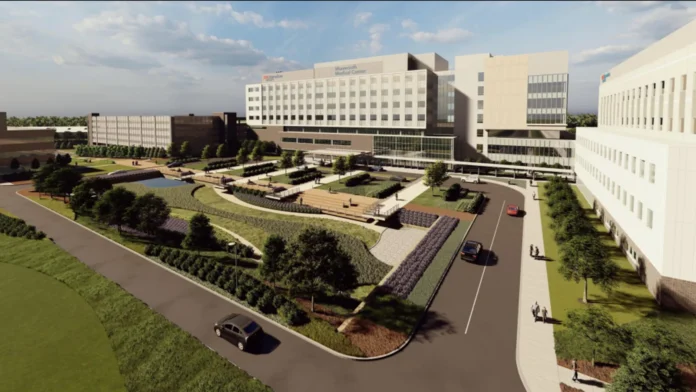A major healthcare proposal has stirred intense debate along the Jersey Shore, as RWJBarnabas Health moves forward with plans to shift many of Monmouth Medical Center’s (MMC) core services from Long Branch to a new, state-of-the-art medical facility in Tinton Falls. The proposal, filed with the New Jersey Department of Health, has set off a wave of concern among residents, elected officials, and community advocates who fear the move could leave behind one of the Shore’s most essential hospitals in a diminished state.
Under the plan, the new hospital would rise on the Vogel Medical Campus in Tinton Falls and serve as the new home for several key departments — including acute care, inpatient surgery, and labor and delivery. RWJBarnabas Health describes the project as a necessary modernization effort that would enhance patient care and expand capacity in a cutting-edge facility designed for future growth. For many, however, that explanation hasn’t quelled growing unease about what the change could mean for Long Branch and the surrounding communities that rely heavily on the existing hospital.
U.S. Representative Frank Pallone, who represents New Jersey’s 6th Congressional District, has become one of the most vocal opponents of the move. He argues that relocating these core services from Long Branch to Tinton Falls would disproportionately hurt lower-income and minority residents who depend on the hospital’s central location and accessibility. “You can’t take away the essential parts of a hospital and call what’s left a full-service medical center,” Pallone said recently, warning that the plan could amount to “gutting” one of the region’s most vital healthcare institutions.
The proposal has also drawn attention from the Murphy administration, which has been placed in the difficult position of balancing modernization efforts with concerns about healthcare access. Governor Phil Murphy’s office clarified that the Department of Health’s decision to deem RWJBarnabas’s application “complete” earlier this month does not indicate approval — it simply marks the start of a formal review period. That procedural step, taken on October 16, 2025, opens a 120-day review process that includes opportunities for public comment and hearings before any final determination is made.
Still, Pallone has criticized both the Governor and Acting Health Commissioner for allowing the process to move forward, accusing them of not doing enough to protect the residents of Long Branch. His criticism underscores a deeper tension between state-level decision-making and local healthcare needs — an issue that often arises when major hospital networks consolidate or relocate services in the name of modernization.
RWJBarnabas Health insists that its goal is not to abandon Long Branch, but to reimagine the site’s purpose for a new era of community-based care. The organization has pledged to maintain an emergency department at the current location and expand outpatient and behavioral health services. Executives argue that the Long Branch campus would continue to serve an important role, though one that looks different from the traditional full-service hospital model. The reconfiguration, they claim, reflects broader healthcare trends emphasizing outpatient treatment and integrated medical networks designed to reduce strain on inpatient facilities.
For Long Branch residents, however, that explanation offers little comfort. Many fear that losing services such as maternity care and inpatient surgery would effectively transform the local hospital into an urgent care center rather than a true medical hub. The proposed changes have become a rallying point for local activists, community leaders, and medical professionals who see the issue as part of a larger battle over healthcare equity and access across New Jersey.
The move also raises larger questions about how hospital systems decide where and how to invest. As population patterns shift inland, many urban and coastal communities — often home to more economically diverse populations — risk being left with reduced access to comprehensive care. Critics argue that while modernization and technology upgrades are necessary, they should not come at the expense of the communities that need them most.
As the Department of Health begins its formal review, public hearings are expected to draw significant attention from across Monmouth County. Both supporters and opponents will have the opportunity to voice their opinions on whether the Tinton Falls expansion should proceed as proposed. RWJBarnabas Health maintains that the new facility would serve as a regional medical anchor capable of improving care delivery for the entire area, while opponents see it as a step toward privatization and reduced accessibility.
At the heart of this growing debate lies a fundamental question: What should the future of healthcare look like for New Jersey’s coastal communities? For residents of Long Branch, the answer will determine not only the fate of their local hospital but the future of healthcare access along the Jersey Shore.
As discussions continue and the review process unfolds, one thing is clear — this issue extends far beyond Long Branch and Tinton Falls. It touches every New Jerseyan concerned about fairness, access, and the role of healthcare institutions in serving their communities. For continued coverage on healthcare policy, hospital development, and public health updates across the state, visit Explore New Jersey’s Health & Wellness section.











